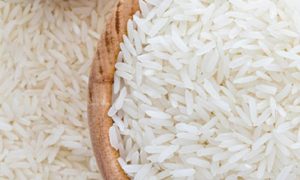Why rice continues to be grown in Punjab despite burning problem

CHANDIGARH: If rice cultivation in Punjab is the reason why the harvest remnants have to be burnt, subsequently causing an air crisis in Delhi, wouldn’t phasing out paddy growing resolve the problem? Even the Supreme Court recently directed the central government to explore offering a minimum support price for other crops to wean farmers away from rice.
The truth, however, is not as simple as crop diversification. The costs, yield and gross returns of other summersown crops, especially coarse cereals and maize, are comparably inferior to rice.
The Commission for Agricultural Costs and Prices (CACP) projects the cost of production (CoP) of various crops for the kharif marketing season and based on this, the Centre announces MSP for various farm produce. Taking all the costs involved and rental value of land, it calculated the CoP for paddy in the kharif season 2023-24 at Rs 1,911 per quintal. MSP for common and Grade A varieties of paddy was pegged, respectively, at Rs 2,183 per quintal and Rs 2,203 per quintal, respectively. In comparison, CoP for maize was determined to be Rs 1,797 per quintal while MSP was Rs 2,090 per quintal.Among the coarse cereals, CoP is the lowest for bajra (pearl millet) at Rs 1,811 per quintal followed by jowar (sorghum) and ragi (finger millet) at Rs 2,833 and Rs 3,328. MSP for bajra, jowar (hybrid), jowar (maldandi) and ragi, respectively, is Rs 2,500 per quintal, Rs 3,180, Rs 3,225 and Rs 3,846.
The projected yield of paddy for 2023-24 is significantly higherthan for millets and maize. The projected per hectare yield for paddy is 43.7 quintals against 13.6 quintals for jowar, 16.9 quintals for bajra, 19 quintals for ragi and 37 quintals for maize.
Calculations of the gross returns, thus, show paddy with the highest average. CACP said the average gross returns for paddy in 2021-22 was Rs 23,495 per hectare. Those for jowar, bajra, ragiand maize were, respectively, Rs 7,214 per hectare, Rs 8,294 per hectare, Rs 2,277 per hectare and Rs 20,247 per hectare.
Given this huge difference in returns, farmers would be loath to shift from rice to other cereals. Until other crops bring in similar levels of profits, rice will continue to be grown in Punjab, even if that mostly sells the produce rather than consumes it.














